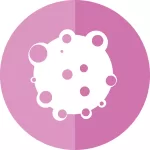In a groundbreaking move, an international team of Type 1 diabetes experts, led by Dr. Michael Haller of the University of Florida (UF) Health, has developed new clinical guidelines advocating for broader screening of the disease among children and adolescents before symptoms emerge. These guidelines emphasize early detection as a crucial step in improving health outcomes for those at risk.
The guidelines, recently published in Hormone Research in Paediatrics, are issued under the International Society for Pediatric and Adolescent Diabetes (ISPAD). They cover screening, staging, and strategies to preserve beta cell function in young patients diagnosed with Type 1 diabetes.
Expanding Screening Efforts
One of the key recommendations includes screening young relatives of individuals with Type 1 diabetes, such as siblings, due to their higher genetic risk. Additionally, screening efforts will extend beyond first-degree relatives to include children in the general population. This initiative could significantly enhance early detection rates and reduce complications associated with late diagnosis.
“Type 1 diabetes affects 1 in 300 people, making it one of the most common chronic diseases in children, second only to asthma,” said Dr. Haller, chief of pediatric endocrinology at the UF College of Medicine and a member of the UF Diabetes Institute. “We have known for decades that the disease can be identified early, but we previously lacked effective interventions. Now, that has changed.”
A New Era in Type 1 Diabetes Treatment
A major development bolstering these new screening guidelines is the recent approval of teplizumab by the U.S. Food and Drug Administration (FDA). This drug therapy, approved in late 2022, has been shown to delay disease progression by an average of two years in certain high-risk patients.
UF Health played a pivotal role in the clinical trials for teplizumab through its participation in TrialNet, an international research network dedicated to preventing Type 1 diabetes. The availability of this therapy provides a compelling reason to expand screening efforts, as earlier detection can now lead to meaningful interventions.
Addressing Disparities and Workforce Challenges
Dr. Haller emphasized that early detection could drastically lower the risk of complications, particularly for underserved populations who face a higher likelihood of developing diabetic ketoacidosis at the time of diagnosis. Diabetic ketoacidosis is a severe complication in which a lack of insulin leads to a dangerous buildup of blood acids called ketones.
However, the success of widespread screening hinges on educating general pediatricians and family doctors about how to interpret and act on screening data. A growing concern is the limited number of pediatric endocrinologists available to meet the increasing demand for diabetes care.
“Our specialty is already small, and recruiting new professionals into the field is becoming increasingly challenging,” Dr. Haller noted. “We need to inspire the next generation of doctors to pursue careers in pediatric endocrinology, which might require state and federal policy incentives.”
Global Leadership in Diabetes Research
Dr. Haller highlighted that the UF Diabetes Institute is among the top global centers researching Type 1 diabetes. “Our research team spans from basic science to translational studies,” he said. “We are committed to developing therapies that can not only delay but potentially prevent or reverse the disease.”
These new guidelines mark a significant step toward transforming Type 1 diabetes care by prioritizing early detection and timely intervention. With continued advancements in screening and treatment, the medical community is optimistic about improving long-term outcomes for children and adolescents at risk.
Disclaimer: This article is for informational purposes only and does not constitute medical advice. Parents and caregivers are encouraged to consult a healthcare professional regarding diabetes screening and treatment options.












